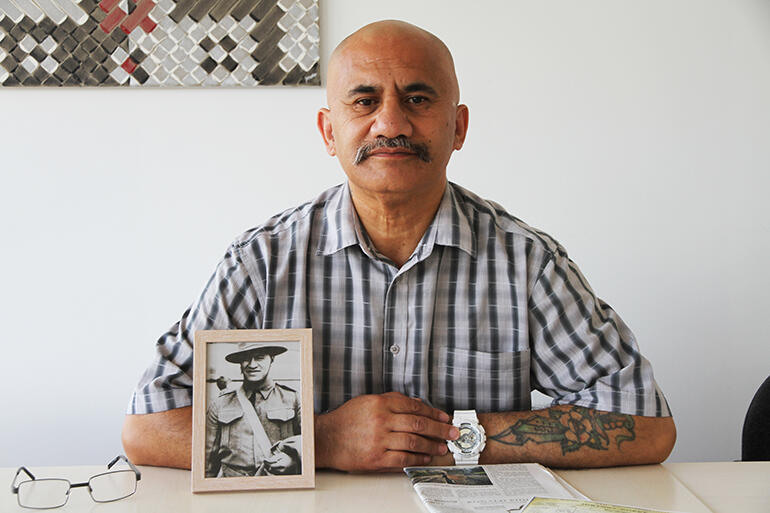
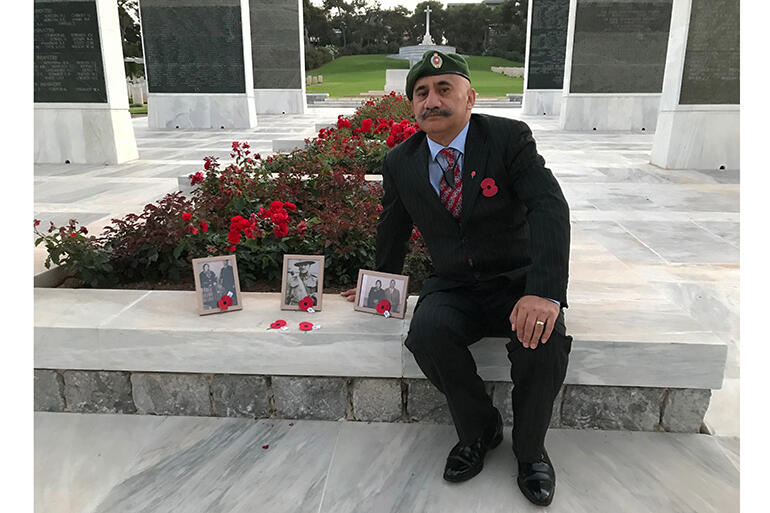
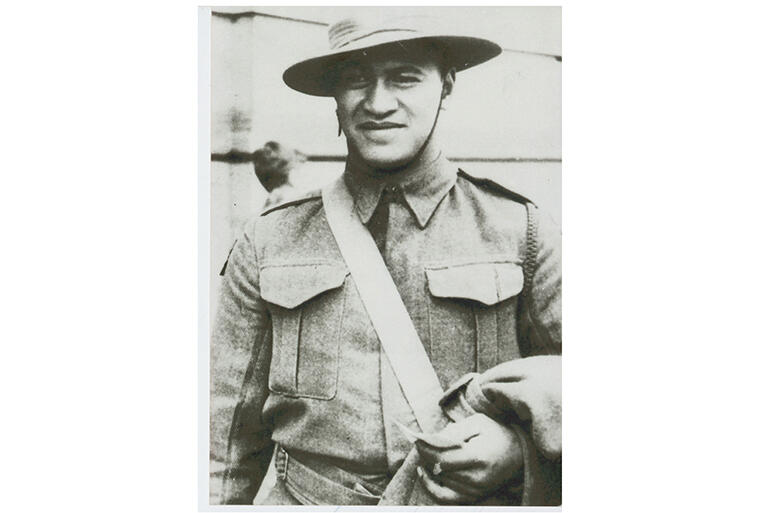
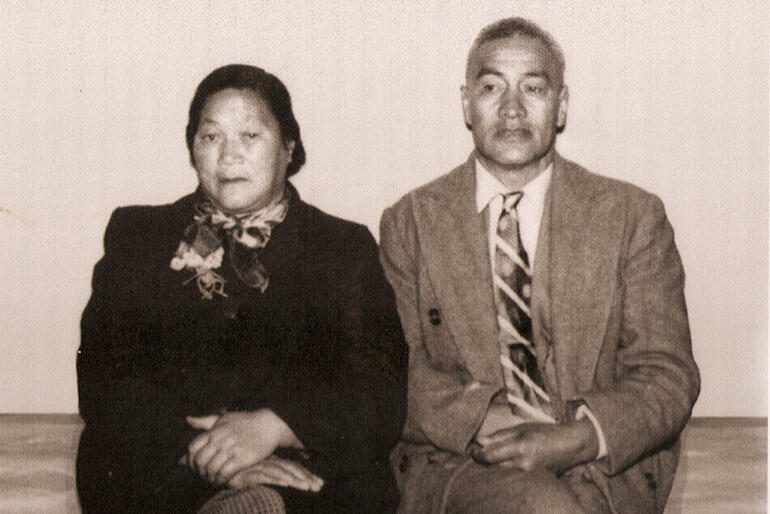
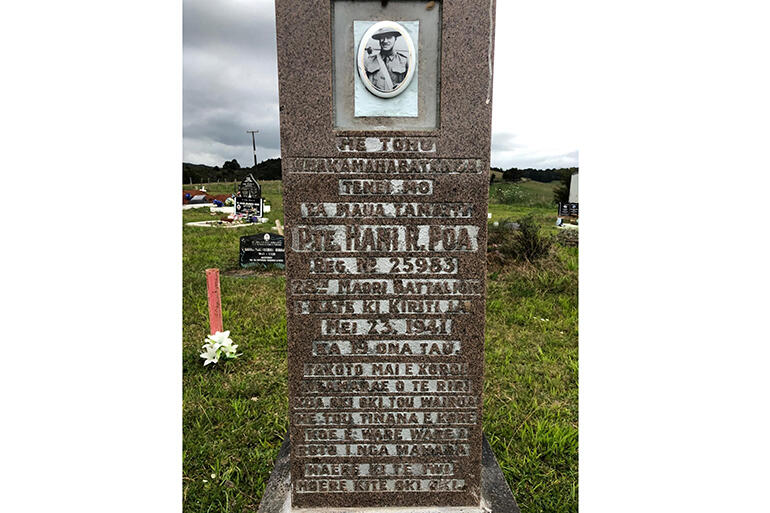
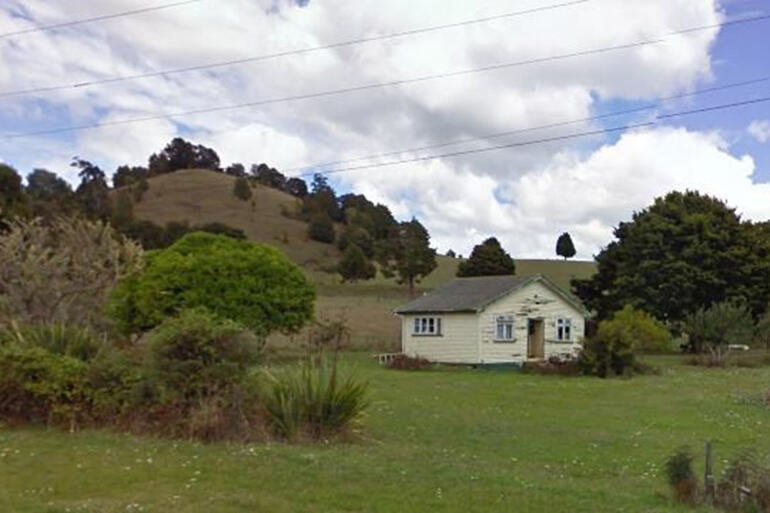
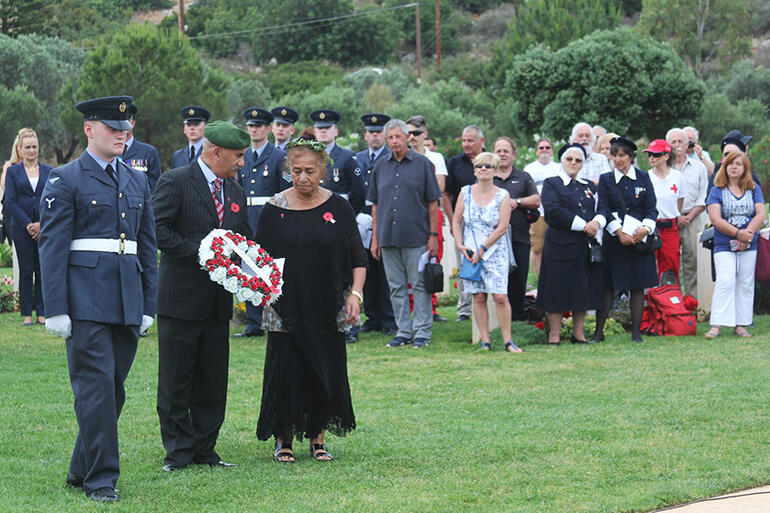
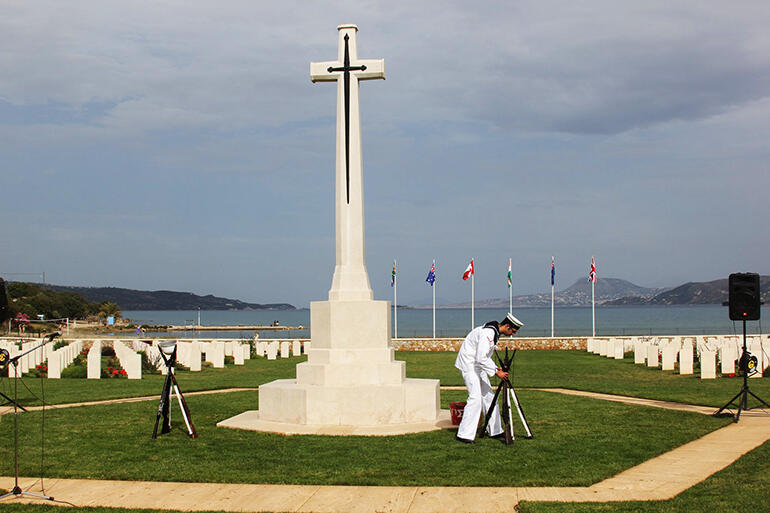
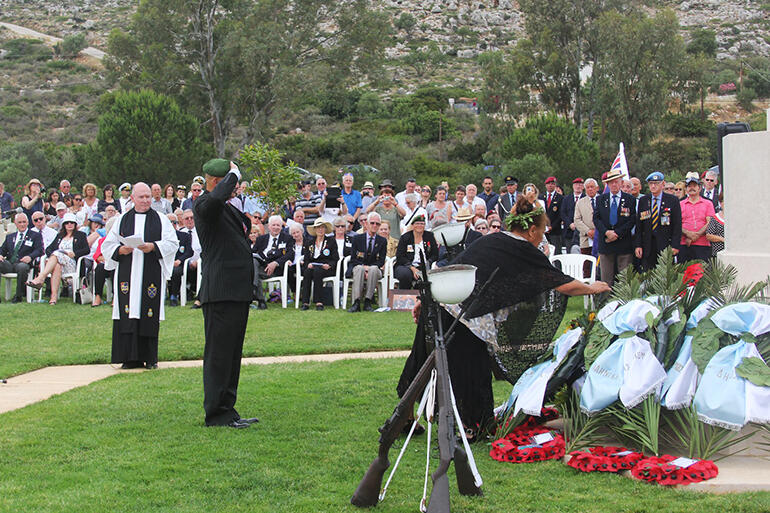
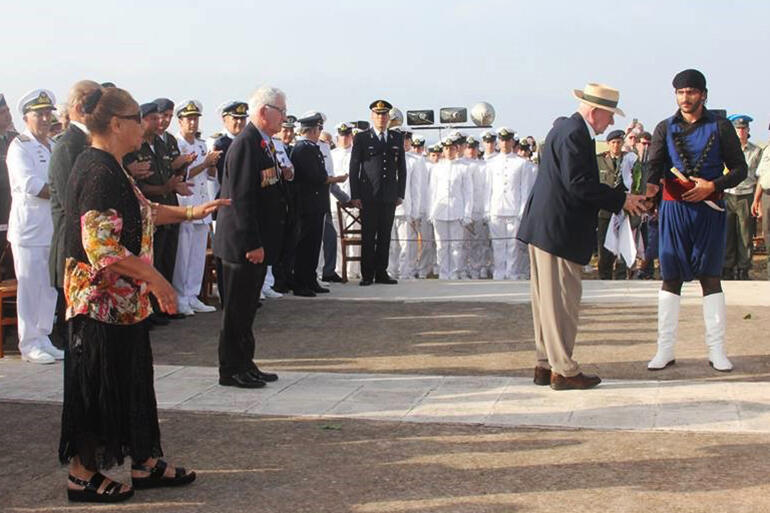
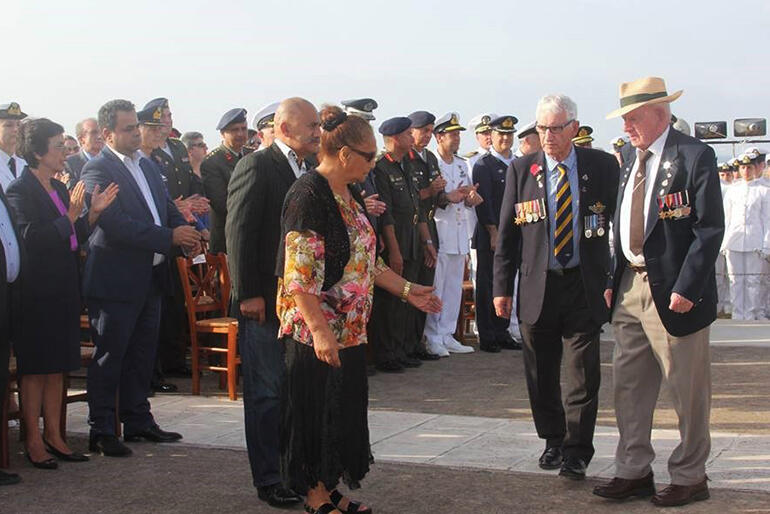
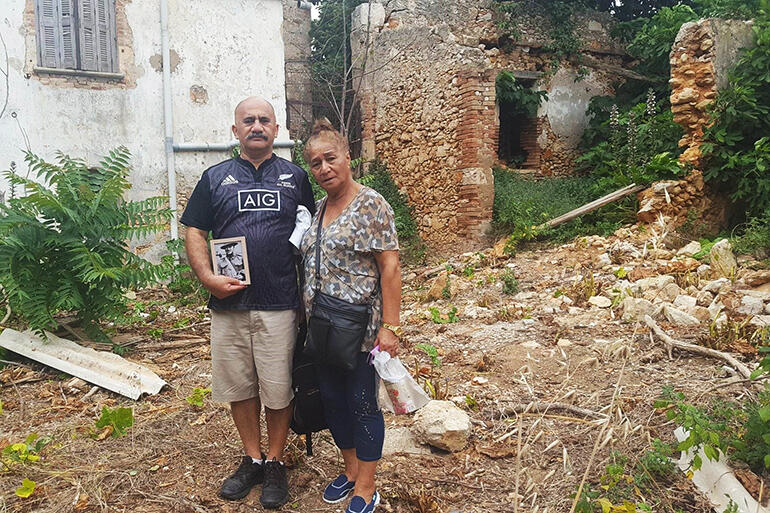
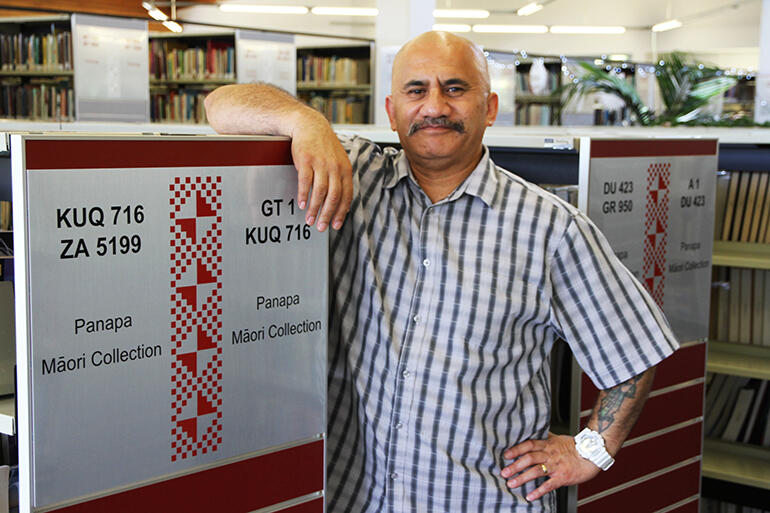
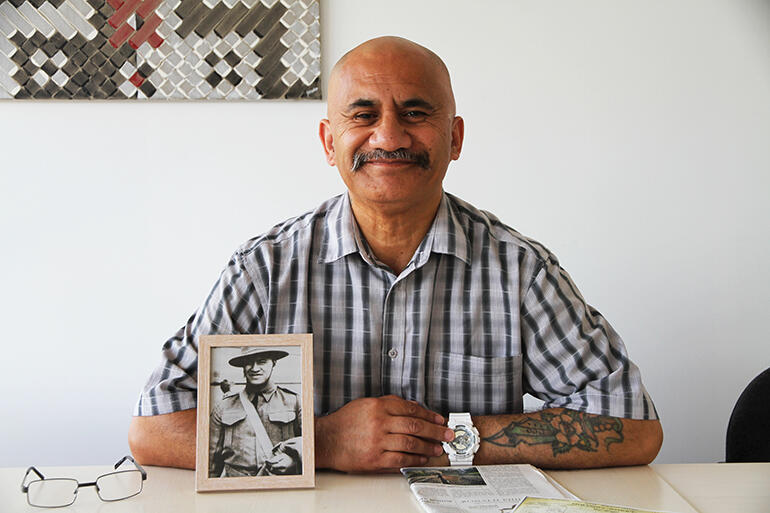
The nearer Ani Eramiha got to her own death, the more she became gripped by the death of her kid brother, nearly 70 years earlier, in the Battle of Crete.
Hani Reihana 'Sonny' Poa was an A Company man who had "died of wounds" in Crete on May 23, 1941, aged 19.
For decades, those three words were pretty much all the whanau knew about Sonny's fate.
They didn't know how he'd died, where he had fallen – nor where he lay. There was no gravestone for Sonny. No place to visit. No place to mourn.
Actually, May 23, 1941 was an especially grim day for the Poa whanau – because Sonny's cousin, Tokararangi Poa[1], was also killed in Crete that same day.
At least in Toka's case they knew where he was. He's one of 1502 Commonwealth service men buried in Crete's Souda Bay War Cemetery.
#
Ani and Mana Eramiha had 11 kids, and Colenso Eramiha is the potiki of that brood.
Most of Colenso's growing up years were spent in Kaikohe.
But the Eramiha clan were always heading to Awarua, which is 20 km south of Kaikohe.
For one thing, Ani's parents, Kapuatere and Reihana Poa, lived there. In fact, Colenso spent much of his growing up running in and around their little whare, out in the paddocks at Awarua.
Then, there was Te Huruhi, their marae – and Te Huruhi urupa, where they'd erected a memorial to Colenso's Uncle Sonny.
Colenso's mum Ani had been especially close to her brother Sonny.
He was the next born after Ani and, as we've said, as her own life wound down – she died in October 2009 – Ani became pre-occupied by his memory.
Colenso and his wife Rona had been living in Auckland for years by that stage – Colenso's family have been tuturu Mihinare for generations, and he's the Kaiwhakamana at the John Kinder Theological Library, at St John's College.
But just because they were living 250km south of Ani didn't mean they escaped hearing about Sonny.
"Mum used to ring us up," says Colenso, "and ask us to come back. And she would just talk from when we arrived on Friday night until we left on Sunday."
Her korero would always circle back to Sonny. She'd fret that no-one had ever been to Crete to find him. And how they ought to do that.
During those many trips north to Kaikohe, Colenso picked up the whanau whakapapa.
That knowledge, and his research skills, have equipped Colenso to become his family's genealogist and historian.
He's grateful for that.
But as for all that talk about Sonny? Well, not so much.
Not at the time, anyway.
#
After Ani died, Colenso "put Mum's thing about Uncle Sonny on the backburner".
But in April 2014, he began to change his thinking.
In the runup to Anzac Day that year, the Dean of the Maori students at St John's, Katene Eruera – he's an ex Air Force chaplain himself – had presented military medals to three Maori ex-service people at the college.
Colenso, who is a former Territorial soldier, was one of them.
That set him thinking again about his Uncle Sonny.
"I thought: 'I'll just have a little look into it. Have a jack.'
"So, I just wrote off to the Defence Force, to see if there's any records."
#
He drew a blank.
At first, anyway.
The Defence Department had no records which corresponded to Hani Reihana Poa, born on September 9, 1921.
After a few months, though, the penny dropped.
Colenso realised that, like so many of the young bucks in the 28 Battalion, Sonny had fibbed about his age, so he could sign up.
So, where the official record shows that Sonny died at the ripe old age of 22 he was, in fact, just 19.
And, probably so his mother couldn't dob him in, he'd tutu'ed with his name. Hani Reihana Poa had become, in the army's records, Honi Reihona Poa.
Once Colenso had shunted those roadblocks aside, though, he made some significant discoveries.
#
He learned, for example, about Sonny's last pay – thanks to seeing a letter that his grandmother, Kapuatere Poa, had written to PK Paikea, the Northern Maori MP and wartime Cabinet Minister:
"It is with a heavy heart that I write… As his mother, I wish that the amount so held by the Army Department, should be paid to me, so that I may be able to erect a Tomb Stone to his memory."
Colenso also received a copy of an affidavit, sworn by Kapuatere, and witnessed by his grandfather, Reihana Poa, asking for the gratuity paid out on a soldier's death, to be paid to them – so they could put a deposit on a house.
In other words, that humble little whare in Awarua where his grandparents lived, and where Colenso had spent so much time as a kid – had been bought with Sonny's blood.
That home took on new meaning at that point.
Colenso learned too, from those war records, where Sonny lay: He'd been buried at Chaleppa School, in Chania.
"You never know," says Colenso, "what you find out when you ask for things."
#
At that point, Colenso made up his mind.
He had to go to Crete.
"For about two years," he says, "I did a lot of planning in my head: 'What would this look like?'
"I started to vocalise it to my wife, and then I decided: 'I'm going to sit down and write me a plan.'
"I'm also part of this Nga Puhi wananga. So, we talk about Nga Puhi history, farewells, poroporoaki, tauparapara and waiata – and I happened to say to our kaumatua:
'This is what I've got planned.'
"And he says:
'Anybody been over to see Uncle?'
"No. No.
'Oh well, you better send your uncle home.'
"Oh, what do you mean?'
'Well: when you get over there, you send him home.
'And you need to know all the ways to send him back.
'Because everything's changed, from way back in the forties.'
'And you don't want him to get lost, finding his way back to your place!"
#
Send your uncle home?
Make sure he doesn't get lost on the way?
The kaumatua's point was that Sonny Poa would have died in battle and been hastily buried. There'd have been no tangi for Sonny. No poroporoaki.
No releasing his spirit to return to his turangawaewae – from there to journey to Hawaiki, from where his ancestors had come, and to which he should return.
Sonny was, therefore, in limbo.
That was what had been troubling Ani, his sister, as she neared her end.
And that was what Colenso committed himself to putting right.
#
So, Colenso committed to learning a poroporoaki that he could chant to his Uncle – a spiritual roadmap for his return home, if you like, that would give his Uncle Sonny the waypoints he would need to know, the rivers and creeks and marae he would need to pass…
That would lead him back "to our river, and to our marae."
Colenso took his opening stanza from Rukuhia, which is a waiata the 28 Maori Battalion composed to pay homage to Lieutenant Te Moananui-a-Kiwa Ngarimu, VC.
Rukuhia rä e hoa mä te Moana
"Rukuhia rä means to dive, and travel 'mä te Moana', under the sea. Haria te mana o te motu – carry the mana of your people.
"That's what I used to get him into the ocean, and back into the Kaipara harbour.
"I told him to look to the left at Pouto, at the marae there as you go into that harbour – and to greet our ancestors there. That's his people. Our people.
"And then he should follow the Wairoa River – until he gets to the fork where the Mangakahia River comes in. Take the Mangakahia River.
"Then, when gets to the fork at the Twin Bridges, take the Awarua River.
"When he gets to Pakotai, he'll salute our ancestors on our grandfather's side. Cause there's a marae there called Te Hepara Pai.
"When he looks at those cemeteries, those places where Rahiri[2] was, and when he sees Pakotai, he'll say: 'Oh yes. I know the way now.'
"Then carry on. Carry on. Take the Otaenga Stream – and that's the stream that leads to our marae."
Getting that roadmap ready, says Colenso, wasn't something he took lightly.
"A lot of prayer went into that, mate.
"It's not just something where you go: 'Oh yeah. I'll plan a trip!'
"I had to be prepared spiritually.
"I was very focussed."
#
Colenso wanted to go to Crete in May, in time for the annual commemorations of the Battle of Crete.
That meant Colenso's wife, Rona, couldn't join him. She's a school teacher, and she couldn't get away then.
Colenso still had an ally, though. His cousin, May.
May Lloyd, who is 73 now, is living in Perth. Sonny was her Uncle Sonny, too.
And May's full name is a lasting reminder of the mamae of May 23, 1941.
She was born: May Crete Poa.
"I just rang her," says Colenso, "and said: 'This is what's up, Cuz.'
"I said to her: 'Me haere taua. Which is: 'You and I – let's go.'
"And she just said: 'OK'. Straight away."
#
During the nine months or so before they travelled to Crete, May also had lots to think about, says Colenso.
"Our grandmother would visit her – if you know what I mean.
"So, she would ring me in tears, because she starts to remember things.
"And I had said to her:
'Mau te taha wahine a, maku te taha tane ne?
'You do the woman's side – and I'll do the male side. Yes?'
"She knew what I was talking about. She said: 'OK'.
#
Colenso and May met in Doha, flew to Athens – but instead of flying the 325km south to Crete, they boarded an overnight ferry, because they wanted to approach the island the way the 28 Battalion soldiers had done.
That ferry docked at Chania, Crete's second biggest town, at dawn on May 18.
Colenso and May had organised their own itinerary. They didn't know that this year, the annual commemorations of the Battle of Crete had been bumped forward a week – and started the morning they arrived.
Colenso and May had arrived too early to be let into their hotel room, so they wandered around the dockside. That's when they heard something they hadn't expected:
'Hey! Tena koe!'
"It's this Pakeha fulla, who's the go-to guy in Melbourne for things on Crete.
"He asked what we were doing. We told him. He said: 'Come with us. We'll look after you.'
The next day, Colenso and May found themselves laying a wreath in honour of the 28 Maori Battalion at the Souda Bay War Cemetery commemoration service.
"In my own little plan," says Colenso, "we were going to go and farewell Uncle as a soldier – so I'd taken my Territorial beret."
He was grateful, too, that he'd packed his suit. Even after 77 years, you wouldn't want to be casual at a solemn event like that.
"I'm sitting next to this 95-year gentleman, Tony Madden – who was one of the few surviving Kiwis from the Battle of Crete, and who has since died.
"When we stood up to attention – he got out of his wheelchair to do that. And when everyone else sat down, he stayed standing.
"I felt embarrassed – so I stood back up with him. Man…"
After the ceremony had ended, they found Tokararangi's tombstone, and paid their tributes to him.
#
The next day, Colenso and May took part in another solemn remembrance service, this time at Maleme Airfield, which had been the scene of one of the most dramatic battles of the Second World War.
That Maleme service is where May first gave her karanga.
Tony Madden laid the wreath to the fallen at Maleme – and he asked May to call him on.
There wasn't a dry eye around the airfield after that.
#
The next day was Colenso and May's last in Crete – and that was the day they hitched a ride to Chaleppa School.
In fact, that place hasn't functioned as a school since the Battle of Crete.
From the street, the building looks intact – but it's gated and locked, and behind that façade it's a wreck, with masonry toppled and pockmarked by bombs and shellfire.
So, Colenso and May had to slip down a side road, and scramble in to the school grounds through rubble, overgrown bush and matted, knee-high grass.
"As we walked in there, I had to figure out how they might have been thinking 77 years ago – where would I bury my dead?"
There were no obvious clues.
Nonetheless, says Colenso, "I'm quietly confident that this is where Uncle is because... because I have feelings.
"I don't know how to explain those feelings.
"And when you looked at the layout of the land, there was one place that stood out for me.
"It was scorching hot – and almost all the grass was burnt brown.
"Except for this one spot that was absolutely shining green, like it had been washed.
"After we'd wandered around for a bit I said: 'You know Cuz, I think Uncle is over there. I'm going back to that place.'"
So, they had their karakia there.
"And after we'd said: 'Amine', I said, out loud:
'Mehemea kei konei koe uncle, hena whakaatu mai he tohu.
'If this is you Uncle, right here – send us a sign.'
At that precise moment, a flock of swallows soared over the top of the derelict buildings – and swooped down over where Colenso and May were standing.
As he recalls that moment, Colenso laughs:
"Yeah. People don't believe in that sort of stuff.
"But I don't care.
"That's what happened."
May and Colenso didn't say much after that.
"We just looked at one another.
"And then... we were happy, so we walked out."
#
Colenso and May flew to Athens the next day. The following morning, long before dawn, they made their way to Phaleron War Cemetery, where Sonny's name is one of thousands etched in stone memorials there.
They set up a simple tableau before his name – black shawl draped over a chair, on which they placed the only photo they possess of Uncle Sonny, flanked by two photos of his parents (and their grandparents) Kapuatere and Reihana Poa. They dressed that little tableau with scarlet poppies.
And as dawn was breaking on May 23, on the 77th anniversary of the day Sonny died, May said her karanga again – and Colenso began his poroporoaki, releasing their Uncle Sonny's spirit to begin its long journey home...
#
So, mission complete, then.
Well, not quite. In fact, Colenso is heading back to Crete in January with his wife Rona. It'll be school holiday time, so she's free to go this time.
Yes – but why go again?
Well, last trip May and Colenso were only in Crete for four days.
On the evening of the day they'd laid that wreath at Souda Bay, they were invited to a village high in the Cretan mountains, where they were guests of honour at a village feast.
They met an older Greek man there who told them:
'You come to my place.
'And look at photos.
'Maybe your uncle is there.'
'These are photos from my father.
'Maori soldiers everywhere.'
'You come to my place.'
#
They just didn't have time to make that side trip last time.
So that's the plan this time. When Colenso and Rona get to Chania, Nick Plomistakis will be waiting for them.
With any luck, says Colenso, they'll be able to scan his photos – and then set up a data base for whanau who might want to check whether their father, uncle or grandfather is among those shots.
So: Colenso's duty last time was to bring the spirit of one of those warriors home.
This time, he'll be aiming to bring memories of dozens more old soldiers home.
#
[1] Tokararangi was a C Company man – he'd grown up in Tikitiki, on the Coast.
[2] Rahiri is a Ngapuhi tupuna. All the chiefly lines in Ngapuhi trace their ancestry through him.

















Comments
Log in or create a user account to comment.